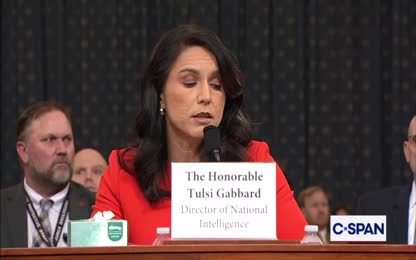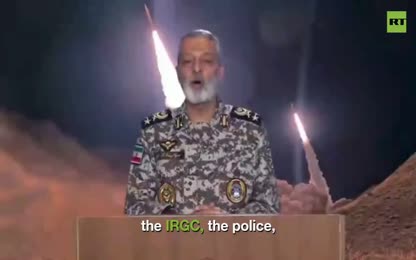Advertisement
Manchester Airport Disaster HOAX of 1985
I remember this one well. Probably for the horror of those people trapped in a flame and smoke filled cabin. Thought about this one for many years afterwards, every time I got on a plane. I am still reminded of it every time the cabin crew give the safety demonstration before take-off. They say 'floor level lighting will guide you to an exit'. It was this incident that gave rise to floor level lighting. TURNS OUT, IT IS ANOTHER CRAPPY HOAX!!!!!!
- Category: Deception / Falsehood ,False Flag / Hoax ,Hoax Code
- Duration: 14:25
- Date: 2018-04-03 15:58:34
- Tags: air crash, manchester, jet fuel, hoax, 1985
1 Comments
Video Transcript:
The West British Air Disaster for 13 years. August 22, 1985. Flight 20 at M, headed for Corfu, never left the runway. An explosion in one of the engines was caused by faulty welding. Thick, black smoke quickly engulfed the aircraft. With one exit door jammed, dozens were trapped inside. Their escape also hampered by narrow aisles and cramped seating. The Air Disaster for 13 years. The Air Disaster for 13 years. The Air Disaster for 13 years. The Air Disaster for 13 years. The Air Disaster for 13 years. The Air Disaster for 13 years. The Air Disaster for 13 years. The Air Disaster for 13 years. This is the Boeing 737 aeroplane. For nearly 20 years, the aircraft and its engines have enjoyed an unrivaled safety record. But on August 22nd this year, at 12 minutes past 7 in the morning, the 737's proud reputation suffered a sudden blow. The sound of an exploding engine echoed across Manchester Airport. A 737 belonging to British air tours, the charter subsidiary of British Airways caught fire as it was about to take off. Within a few minutes, 54 holiday makers had died in the inferno that cut the plane in two. 14 more were injured, one of whom died later. How could this disaster befall such an inherently safe aeroplane? A complete answer must await the examination now being carried out by the government's accidents investigation branch. But already a close examination of the last days of the holiday jet, call sign Juliet Lima, raises important questions as to how it was operated and maintained by British Airways. Behind the tragic scenes of that fateful day which brought the Prime Minister to Manchester lies a history of a troubled engine. Two years earlier, a crucial part of the engine that exploded had begun to show signs of deteriorating faster than usual. In September 1983, the engine which stripped down looked like this had its first inspection. It had completed 3,300 take-offs. Particular attention was paid to this area containing 9 burner cans where fuel and compressed air are mixed and burnt to provide jet thrust. Burner cans are made up of 11 cooling rings or liners like this. Engineers found two cracks adding up to seven inches. One was five and a half inches long, the other one and a half inches. Both were progressing round the liner. The airline with more experience on the Boeing 737 than any other European operator is Britannia Airways which has flown the aircraft since 1968. Today they have a 27 strong fleet. That would be so unusual. In the 17 years we have been operating this airplane and nearly 2 million engine hours we have never seen anything like that. Some burner can cracking is inevitable because of the very high temperatures inside. Cracks become very dangerous if they progress 360 degrees or all the way around. When that happens the can separates and may become misaligned. Hot gases and flame burn a hole through the surrounding casing. There is a hard pressure inside that casing and that flame and the heat could weaken this case to the extent where it eventually ruptures. Then you have an explosive decompression and strapped all pieces will fly in all directions. British Airways repaired the seven inches of cracks in Juliet Lima's burner can by welding them. But when the can separated nearly two years later leading to 55 deaths it split partly along the old weld repair. The new new new new new new new new new new new new new new new new new new new new new new new new new new new new new new new new new new new new new new new new new new new new new On the morning of August 22nd, 138 passengers were boarding flight KT-328, bound for the Greek aisle of Corkfru. As the plane was pushed away from the gate, Sylvia sitting near the back was beginning to have second thoughts. I just sat in my seat and I just said to my friend that I don't really want to go. I said, I don't know why, but I just didn't want to go and she said, we'll be fine. At 712, flight KT-328 was cleared for takeoff. 36 seconds later, as the plane's airspeed reached 125 knots, its left engine exploded without warning. There was a big bang, there was a loud bang and I remember looking out of the window, looking at the engine, looking tilting round and looking at the engine. It was just like my flames and black smoke coming up from the left unsurled plane. There was a loud bang and initially I thought it was the tyre exploding. Looked to my left, saw the wing ignite. The engine was normal and then the next thing, there was all these orange flames inside the engine. I knew that that's where the bang had come from. But I thought, oh, that sort of thing happens. I thought, well, we'll stop and we'll get on another plane. We'll probably be delayed for another couple of hours or something and then we'll be off. But I didn't imagine that anything could happen like it did. Debris from the explosion had ruptured the fuel tanks under the left wing. In fractions of a second, hundreds of gallons of fuel, ignited by the hot engine, spilled onto the wing and the runway below. I thought, this is it I'm going. You know, I stood up, sat down again because I thought, no, this is silly. The plane's still moving and I stood sit down. When I sat down, I thought, this plane's getting hot at the side of me here to my left or the side of the plane. So I thought, no, I'm going. And I stood up again and that's when I started to move towards the aisle. And I wasn't panicking. I was just standing up and starting to move. And I said, no, I'm moving. It's hot, you know. I mean, then I squeezed past the gentleman who was on the aisle seat in front of me and made my way into the aisle. Because the plane had turned away from the headwind as it pulled off the runway, the flames were now being blown by a seven-not-wind into the rear of the passenger cabin. The young girl on the left-hand side of us shouted over to me that her back was on fire and I just said to stay in your seats. And then, within seconds, the flames just came from behind her into the plane. I looked to the left-hand side of me and there was like a hole in the plane and the glass was all cracked. And I still didn't realise what was going on. I didn't think anything of it. And then people would diving over the seats on the left-hand side of us getting over the other people's seats. And then the smoke and flames came in straight away then, like somebody was hosing it into the plane. As the smoke came towards me, took a breath of smoke. It was enough to fill my lungs and to make me sort of real and to almost lose unconscious. As I felt almost that lulling of this kind of, almost pleasant sensation, something snapped me out of that and I bent down under the smoke and breathed good air. And from a crouching position made my way through the bulkhead at the front of the plane. You couldn't walk into the aisle at the side of you because it was just people falling, collapsing with the smoke, screaming crying. So we had to go across the seats, straight across the seats, but the seats didn't go down. They went halfway down. So you had to climb over and then over again. You had to be careful that you didn't get stuck. And we just had to really touch by touch to get over the seats because it came in so quick. The smoke just engulfed us all and then it was pitch black. It seemed like age, it seemed as if it was there for about ten minutes before anything started happening, but it was probably about 30 seconds and then the people in front started to move. The eye was solid and Lindsay was five or six people in front of me. We shuffled along, holding onto each other's shoulders. There was telling everybody to jump, jump, jump, jump, and Stuart was putting his hand on your back just to give you a helping push. But everybody was going quite well anyway, nobody was hesitating and I didn't, I just jumped. With three of the four remaining exits closed due to the smoke and fire outside, the only way out for Sylvia and others at the rear of the plane was through the much smaller exit over the right wing. It was the case that you couldn't see anything. So you could have been climbing over somebody's body or over the seat, you wouldn't really know, you couldn't tell. But as you got to the wing exit, it was just a mass of people's bodies. It was people on the floor, people holding hands. There was a man stuck half in the plane and half out, he was squashed and there was about seven to nine inches to get through. So you had to climb over them, it was the only way to survive. We were fighting each other to get out. As I got out of the plane, I thought it was on the ground and I ran. But I didn't realise that was on the right hand wing. And as I got, it was slanted so I was running upwards. And as I got to the top of the wing, I heard a voice from the left hand side just shout, to shout, jump. And I jumped down from about 26-forts, 27-forts onto the concrete of the runway. The firemen picked me up and I just told him to put me down. And I went back to the wing and he said, you must move from here because there's thousands of gallons of fuel. And I said, now I said my friends in there, I've got to wait for her. I kept trying to pull me away, but I wouldn't go without her. About 30 seconds passed. And then she popped out, she was hysterical, she was covered in the film with another girl and she got out then. One of the firemen who was wearing breathing apparatus doing the search shouted down to me that he'd found a person breathing amongst the casualties underneath several casualties. Firefighters contained the blaze in less than 45 minutes, but the lethal cocktail of toxic fumes had killed 55 people. Of the 82 survivors, all but one had escaped in the first two and a half minutes. 53 passengers and two crew members died, most from smoke inhalation. Your minds are very much fulfilled with the horrible situation and the tragedy of the panace. As a result of the tragedy, several changes have been made to passenger aircrafts introducing wider exits and floor level lighting. Survivors and relatives of the dead have welcomed the changes.










 Donate
Donate







